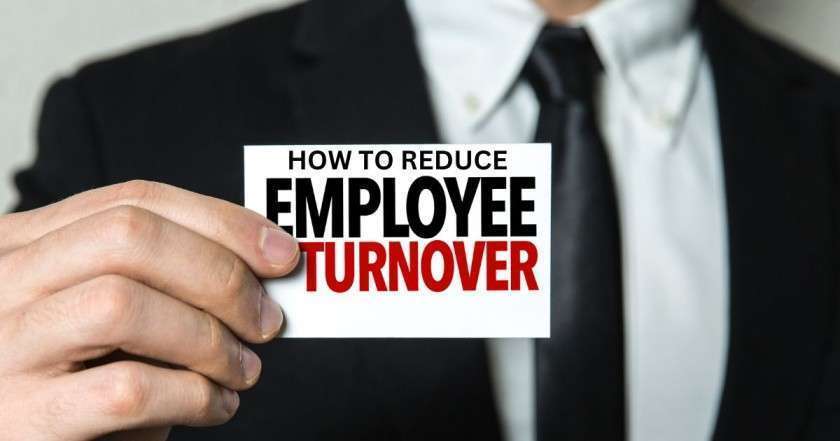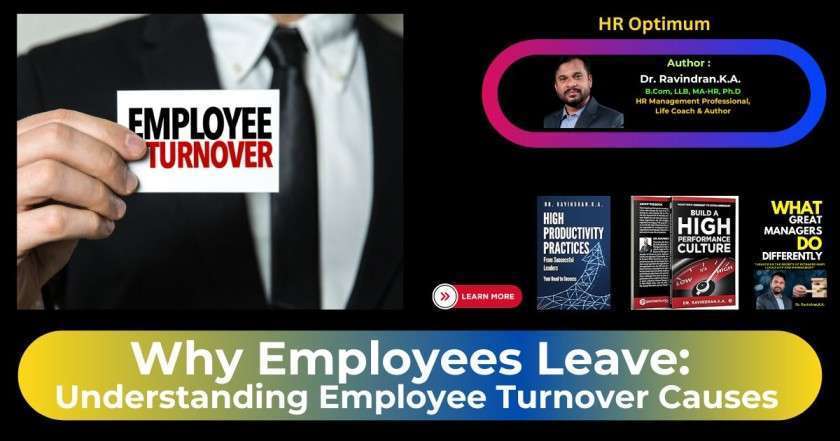“How to Reduce Employee Turnover: Practical Tips for Managers”
In today’s business world, keeping the best employees is key. High employee turnover means people leave jobs often at a company. This can hurt how well a company does and how it grows. The cost to replace someone can be one-half to two times their yearly pay. So, it’s very important for managers to use smart ways to fight turnover. But what can be done to keep employees happy and make the company do well? Let’s look at practical ideas to lower employee turnover and build an active workforce.
Thank you for reading this post, don't forget to subscribe!Key Takeaways:
- Understanding the true cost of high employee turnover and its impact on company profitability and growth
- Identifying the common causes of employee departure, including toxic company culture, poor management, and lack of work-life balance
- Implementing effective hiring practices to attract and retain the right talent that aligns with the company culture
- Offering competitive compensation and benefits to remain attractive in the job market
- Fostering a positive work environment and addressing toxic employee behaviors proactively
The Importance of Reducing Employee Turnover
Employee turnover truly matters for a company’s success and growth. When skilled staff leave, companies not only lose their expertise but also spend time and money finding and training new people.
Understanding the Cost of High Turnover
Every year, between 10% and 20% of employees in the U.S. change jobs. This costs the economy a staggering $1 trillion. According to a 2023 survey by Omam Consultant, the overall employee turnover rate in India was 13.75% down from 17.09% in 2022. To replace just one worker can take up to double that person’s salary.
Impact on Company Profitability and Growth
Keeping the best employees helps businesses meet their goals. But it’s getting harder and more expensive to hire good people. When turnover is high, companies lose valuable expertise, see productivity fall, and experience reduced morale among the team that stays. To stay ahead and succeed in the long run, it’s critical to keep turnover low.
Surveys show that less than half of all employees think their job matches what they were told. Meanwhile, up to 30% have left jobs because they couldn’t work flexibly. This signals the crucial need for companies to accurately depict jobs and offer flexibility to keep staff.
“Retaining top talent is crucial for delivering on business plans and objectives, and finding the right people is becoming more challenging and costly.”
Identifying Causes of Employee Turnover
It’s vital for companies to know why their employees leave. Many studies confirm that issues like better pay and benefits, chances to grow in their careers, and wanting a healthier work-life mix make people quit. How a company’s managers lead and its overall vibe also plays a big role in whether someone stays or goes.
Common Reasons for Employee Departure
- Inadequate compensation and benefits: Workers often want more money and better perks, prompting them to look elsewhere for jobs.
- Lack of career growth and development: If workers don’t see a way to move up or feel stuck, they usually start job-hunting for new opportunities.
- Unhealthy work-life balance: Too much work, too many hours, and not enough time for life outside of work lead to burnout and the search for a balance-friendly job.
- Poor management practices: Bad bosses, too much hovering over tasks, and feeling like their work isn’t seen or valued can kill morale and drive good employees away.
Role of Company Culture and Management
How a company feels to its workers, including its values, growth opportunities, pay and benefits, balance between work and life, and the example set by top leaders, makes a huge difference in keeping people. A positive culture and good management are key for making a place where employees want to stay and feel valued.
| Factor | Impact on Turnover |
|---|---|
| Organizational Culture | Workers are more likely to stay when they believe in what the company stands for and sees paths for their own growth. |
| Management Practices | Supportive bosses who give useful feedback and recognition can lower job quitting rates, but the opposite can lead to more people leaving. |
| Work-Life Balance | Encouraging a life outside work with reasonable tasks and flexibility is a key aspect in keeping employees and avoiding burnout. |
Fixing the issues that often cause workers to leave and building a strong culture and management can help firms keep good employees. This strategy can also save money and trouble from a high turnover rate.
Employee Turnover: Hire the Right People
The first step to lower turnover is picking the right ones who match company values. Recruiters should be clear about what the company stands for and what it expects from people. Getting current employees involved in the hiring can help make better choices too.
To keep staff longer, it’s vital they understand what their job involves. Around 24% of employees stay longer when they clearly see what they’re getting into. Organizations should take the time to really get to know potential hires, either face-to-face or through videos, to gauge if they’ll do well in the company.
Aligning Candidates with Company Culture
Matching new hires with the company’s culture is a big key in keeping them. It’s not just about skills; it’s also about what they believe in, how they work, and how they’ll fit with the team. Referred hires work well and stay longer, which is why employee referral programs are great. They let current staff vouch for suitable candidates.
Peer Involvement in Hiring Decisions
Having coworkers help pick new team members can lead to better choices and fewer turnovers. Employee referral programs have cut down on hiring times by almost half. This way, those who will work alongside the new hire can give input. They provide deep insight into who is the best match.
Getting new hires started on the right foot is as important. A smooth onboarding process can keep employees around much longer and make them more productive. It’s all about explaining the company’s goals and how the new people can help achieve them. This sets new hires up to be engaged and successful in the long run.
“Selecting the right people is key to reducing turnover. Recruiters need to clearly talk about the company culture from the start. Aim to find candidates who share the same values and ways of working.”
Offer Competitive Compensation and Benefits
Attracting and keeping top talent is key to any business success. To reduce employee turnover, it’s crucial to offer competitive pay and benefits. Not only does it push employees to work harder because they love what they do, but it makes them feel valued by their employer.
Studies show that health insurance and paid time off are key for 88% of workers. Sixty-six percent think paid parental leave is important. In 2017, 75% of employees would stay longer at a job because of its benefits. On the other hand, 47% would look for a new job if benefits are confusing or not fulfilling.
Employees who feel disconnected can hurt a company’s profits. This makes it very important to offer fair pay and benefits so they stay happy. Companies that do this not only have more productive workers but also a better reputation.
To beat the competition, companies should always check their pay and benefits against what’s standard. This is even more critical for jobs that are hard to fill. Giving bonuses and looking at pay equality can also stop workers from leaving because of pay issues.
Focusing on compensation and benefits helps companies draw in top talent and build a culture of fairness. This reduces expensive turnover and leads to long-term success.
“Compensation and benefits are about more than just money. It’s about showing you value your employees and care for them.”
Manage Toxic Employees Proactively
In the era of the Great Resignation, many Americans quit their jobs from April to September 2021. This wave highlighted the need to tackle toxic behaviors at work. Revelio Labs found that a bad work culture was the main reason people left jobs, more than low pay.
Toxic workers negatively affect how well others work, their spirit, and how connected they feel. This often makes good employees leave and lowers the team’s efficiency. Laura Crawshaw notes that handling toxic behavior costs the same as losing skilled staff and a decrease in efficiency.
Identifying and Addressing Toxic Behaviors
Difficult from the rest, toxic employees are extremely disruptive and focused only on themselves. They don’t listen to reason and bring down the team’s mood. Managers need to deal with their behavior fast to keep the top performers.
First, it’s important to keep a record of what the toxic employee does and then talk to them frankly. Giving them a chance to change through mentoring and setting clear goals for improvement might work. Yet, if they don’t change, it’s necessary to let them go for the good of the team’s health.
Fostering Positive Work Relationships
It’s crucial to create a workplace where everyone thrives by being their true self. Google’s findings show that trust and inclusion are more important for a team’s success than the work setup itself.
Healthy work relationships and being proactive in solving issues helps in building a strong, united team. This leads to better employee retention. It is vital for organizations to deal with toxic behavior swiftly and build a positive work culture to keep their best people despite the challenges the Great Resignation brings.
| Characteristic | Difficult Employee | Toxic Employee |
|---|---|---|
| Behavior | May be reasoned with | Unreasonably disruptive and self-centered |
| Attitude | May be difficult, but not necessarily self-isolating | Uncooperative, self-isolating, and detrimental to team morale |
| Impact | May cause temporary challenges | Significantly impacts productivity, morale, and engagement of other team members |
| Management Approach | Open communication, mentoring, and coaching | Prompt documentation, direct confrontation, and potential termination |
Employee Recognition and Rewards
Recognizing and rewarding employees boosts their engagement, retention, and satisfaction. Small acts like thank-you notes and verbal praise matter a lot. They make employees feel valued and motivated to stick with the company.
Implementing Peer-to-Peer Recognition Programs
Using technology, peer-to-peer recognition programs can improve how engaged and loyal employees are. These programs let staff celebrate their peers’ successes. This builds a stronger sense of teamwork and appreciation.
Organizations can motivate their teams by giving out rewards or points. These rewards encourage employees to keep up the good work.
Celebrating Achievements and Milestones
It’s important to celebrate when individuals or teams achieve something. This can be a work anniversary, a promotion, or finishing a big project. Such recognitions make employees feel valued and encouraged.
This kind of celebration keeps morale high and motivates staff to keep improving.
Research shows that highly engaged teams have lower turnover. When employees are recognized, they are less likely to leave. In fact, those recognized just once leave their job less often.
Good recognition and reward programs improve engagement, motivation, and the work atmosphere. They also help attract top talent to the company. Recognizing employees can make them stay and work harder.
“Recognition and respect are equally significant for high-performing employees as financial benefits.”
To reduce employee turnover, we must implement great recognition and reward systems. Celebrating employees’ hard work makes them feel valued and motivated. This leads to a more productive and happy workplace.
Promoting Work-Life Balance and Flexibility
In today’s world, many employees want a good balance between work and life. Letting them work flexibly can keep them happy and lower how many leave. By letting people work from home, choose their hours, or work only part-time, companies can keep their best workers. This is what the research by the World Economic Forum shows.
Almost half of the people in the study would think about leaving a job that makes life hard. And a big part of employees, 77%, said they like their job more when they can work from anywhere. People who can control their time feel more loyal and do better work.
Flexible Work Arrangements
Finding ways for people to work flexibly is great for them and the company. Some good options are:
- Remote work: Letting employees work from home sometimes or wherever they need to be.
- Flextime: Allowing people to pick when they start and finish work to fit their lives better.
- Compressed workweeks: Having fewer days a week but working more hours each day can also help.
- Part-time schedules: Working less hours could be the solution for a lot of people.
Respecting Time Off and Boundaries
But flexible work is only part of the solution. Giving people their time away from work and making sure they can relax is just as important. Many workers feel tired of their jobs, and stress at work is a big reason.
Companies should make sure their workers really take breaks. Not emailing after work hours is a good start. Also, a culture that values life outside of work is key. When companies show they care about their employees’ personal time, everyone wins.
| Key Statistic | Insight |
|---|---|
| 86% of workers said work well-being is very important, with 57% seeing work-life balance as key (Monster survey). | Having a balance between work and personal life is essential to how happy and committed employees are. |
| Places that care about work-life balance keep their workers more interested in their jobs. | This means a happier and more committed team, which is good for the company. |
Giving flexible work options and respecting time off and personal space can make a big difference in how people feel about their work. It can mean less leaving, more happy workers, and better results for the company.
Employee Turnover: Enhancing Engagement and Development
Keeping top workers involves several steps. Two big ones are making sure managers and employees get along well and offering chances for learning and growing. By helping managers and their teams build stronger bonds, workplaces encourage trust and support. This improves how happy and engaged employees are.
Improving Manager-Employee Relationships
Having regular chats between managers and their team members is key. It lets them talk about any issues, agree on goals, and understand what’s expected. This personal touch makes employees feel they matter and that they’re a key part of the team.
It’s also vital that managers are good at giving feedback and praise. This can make their relationships stronger with their teams.
Providing Learning and Growth Opportunities
Good onboarding, great training, and clear career paths show a company is serious about helping its employees succeed. These things help people learn new skills, get certifications, and move up in the company. They create an atmosphere where everyone is always learning and growing.
Pairing people up to mentor and sending them to conferences helps too. These efforts boost how connected and loyal employees feel.
FAQ
What are the common reasons for employee turnover?
Employees often leave jobs for several reasons. These include wanting more money, better benefits, and career progress. They might also leave for a better work-life balance or if their boss isn’t effective.
The reasons often point back to a company’s culture. This includes its values, opportunities for growth, pay and benefits, work-life balance, and the impact of top leaders.
How can companies reduce employee turnover?
To lower turnover, companies can do a few things. They should choose people who fit well with their culture. Offering solid pay and benefits is vital. Also, they should deal with toxic workers and recognize good work. They also need to support employees’ lives outside work and help them grow professionally.
What is the impact of high employee turnover on a company?
High turnover can hurt a company’s bottom line. Losing skilled workers is expensive. It takes time and money to find and train new people. The Conference Board warns about this. They say U.S. profits could drop to 1980s levels because of rising labor costs and turnover.
How can companies ensure they hire the right people to reduce turnover?
To get the right people, recruiters need to understand the company’s culture. They should look for candidates who share the company’s values. Letting future colleagues help in hiring can be beneficial. It’s also key to spend time with candidates, either in-person or through video calls.
Why is offering competitive compensation and benefits important for reducing employee turnover?
Good pay and benefits matter a lot to job seekers. Companies need to offer fair salaries and look after their employees’ pay over time. It’s also crucial to know what the competition pays for similar jobs. Bonuses for achieving goals and fair pay reviews help prevent turnover caused by pay issues.
How can companies manage toxic employees to improve retention?
Dealing with toxic coworkers is vital. These employees can drive others away. It’s important to spot their bad behavior and talk openly with them. Making efforts to build a positive workplace and solve issues quickly helps keep good employees happy.
What are effective ways to recognize and reward employees to improve retention?
Recognizing and rewarding hard work boosts loyalty. This can be as simple as saying thank you or providing new challenges. Managers and technology can help with this. Celebrating successes, both individual and team, keeps employees engaged and motivated.
How can companies promote work-life balance and flexibility to improve employee retention?
Job flexibility is important to employees. Companies should offer options like working from home or flexible hours. They should also respect personal time to avoid burnout. A culture that supports work-life balance increases satisfaction and loyalty.
What strategies can companies use to enhance employee engagement and development to reduce turnover?
Engagement and growth opportunities help keep employees. Good relationships between managers and their teams are crucial. Clear goals and regular check-ins make a difference. Training and career plans show employees they’re valued. Opportunities for learning and mentorship also increase satisfaction and retention.
 hroptimum
hroptimum






